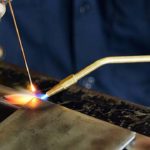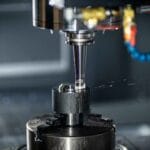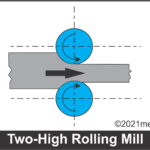What is Soldering?
In this article you will know what is soldering, various processes involved in soldering. Soldering is a process of joining two or more metal pieces by melting and then filling the joint by a solder. Solder and a flux are the two important things required during soldering.
Soldering has a wide range of application in different industries. It is used in plumbing industries for joining copper pipes, in electrical and electronic industries for joining wires etc. We will discuss their application below and before that lets put an eye on its history.
History Behind Soldering
The history revealed that the soldering was started in Mesopotamia around 5000 years ago. One thing is confirmed that goldsmiths of ancient Egypt know how to join gold more than 5000 years ago. The famous Sumerian swords are created by soldering process. In ancient times jewellery products, cooking tools are assembled by using soldering.
From then world’s soldering technology was developing day by day. Most impressive achievement was got by ancient Romans as they soldered 400KM long water pipes made up of leads.

Requirements
Same as tools or equipment’s are needed for welding, soldering also requires some major tools or equipment in order to perform the process. Lets discuss them.
As above stated solder and a flux, are the two main requirements of soldering. Following is the brief information about that.
Solder
Solder is a fusible metal alloy used to create a permanent joint between metal workpieces. There are various types of solders such as:
- Lead-free solder
- Lead solder
- Hard solder
- Glass solder
- Flux-core solder
Common solder formations depended on lead and tin are listed below. The fraction % of tin first and then lead, totally 100%:
- 63/37: melts at 183 oC
- 60/40: melts between 183-190 oC
- 50/50: melts between 183-215 oC
Flux
The main intention of the flux is to facilitate the soldering process. Previously, most common type of flux which was used in electronics was rosin based. Plumbing and other applications uses an acid-based (hydrochloric acid) flux which provides cooling of joint. There are also various types of fluxes available such as:
- Water soluble fluxes
- No-clean fluxes
- Traditional rosin fluxes
Also Read:
What is Difference Between Soldering and Brazing?
Types of Soldering

There are mainly three types of soldering:
1. Soft Soldering:
It uses an alloy made up of tin and lead as a solder. In soft soldering, the melting point of the filler metal is below 400 oC (752 F). During soft soldering, capillary action takes place when the work pieces are very close to each other. It mainly requires soft lead as a primary need that’s why it is called as soft soldering. Soft soldering is unable to make a strong joint and unsuitable for mechanical load bearing applications.
2. Hard Soldering
It uses an alloy containing silver. The temperature requirement for this process is above 450 oC. It is also called as silver soldering. We mainly do silver soldering and for more strong joints we do brazing. It uses an alloy containing silver as a filler material. It is used in small fittings. This process is not sufficient at gap filling hence, different fluxes are recommended for silver soldering.
3. Brazing
It creates a strong joint by using brass. Brazing involves the melting of two base metals by generating melted metallic filler across the joint and as a result of atomic attraction forms a cool solid bond.
Working of Soldering
How soldering really works? Following are the important steps included in soldering:
- Cleaning: Generally heated metals oxidize easily. Initially, the tip of the soldering iron is cleaned by using a sponge that must be damped. Because if you use dry sponge which will not be compatible for cleaning. In case of wet sponge, it will lower the temperature of the tip making it ineffective for the process.
- Heating: To attain the required melting of filler metal, the temperature of the soldering station must be adjusted to 350 oC.
- Insertion: The components which are to be soldered are inserted in the holes of the circuit board. The fine pliers are used for bending.
- Soldering: You must hold soldering iron at an angle of 45 and at the same time keep the solder wire in contact to the space between the iron tip and the lead. At the last stage of soldering, remove the solder tip first and then wire carefully. Allow the solder joint to cool naturally and slowly.
- Removing residue: If any of the flux remains present, then it will continue to react with that solder resulting in harmful oxidation. The printed circuit board must be cleaned with a brush and isopropyl alcohol.
- Finishing: After cleaning, use the finishing wax for more attractiveness.
For Better Understanding about Working of Soldering Watch the Video Given Below:
Also Read: Types of Patterns in Casting Process
Some of the Concepts in Soldering Process
Desoldering:
Desoldering is the removal of solder and components from circuit board for repair, replacement and troubleshooting.
Solderability:
It is the measure of the ease with which the soldered joint can be made to that material.
Other Various Processes of Soldering are:
1. Induction soldering: Induction soldering involves the induction heating by high frequency AC current in the vicinity of copper coil. In this process, solder is placed between the facing surfaces and this solder melts at low temperature range.
2. Hot-bar reflow: It is the process in which two pre-fluxed soldered coated parts are heated with the use of thermode (a heating element) to a suitable temperature. Pressure is applied in this process for 15 seconds.
3. Laser soldering: In laser soldering, a 30-50W laser is used to melt and solder joint. Wavelengths are in the range of 808nm to 980 nm. To avoid the divergence of beam, lenses are used for creating suitable spot size on the workpiece at a suitable distance.
4. Fiber focus infrared soldering: In this technique many infrared sources are led through fibers, then focused at a point where the connections is soldered.
5. Pipe soldering: In this process, propane torch is used to deliver the required power needed for welding. Copper is the only metal that is joined in this process. The precaution that must taken during this process is that any pressure which is developed by heating must have an outlet.
6. Mechanical and aluminium soldering: This process is familiar to the low temperature brazing. In this mechanical characteristic of the joint are very good and further can be used for structural repairing.
7. Resistance soldering: In resistance soldering, heat needed to flow the solder is created by passing an electric current through solder. By monitoring the conducting current and the resistance developed, the resultant heat developed can be predetermined and calculated.
8. Stained glass soldering: Tiffany-type stained glass is made by gluing copper foil and then by soldering.
9. Active soldering: Active soldering has been effectively shown to bond ceramics, aluminium, titanium, graphite and carbon nanotube based structures at temperature lower than 45 oC.
Applications of Soldering:
- Soldering provides most efficient and permanent connections between copper pipes in plumbing and joints in sheets of metal.
- Soldering is also used in electronics and metalwork.
- In stained glass work, soldering is used to connect copper foil and lead came.
- Soldering joins electrical wiring to printed circuit boards with the help of solder.
- Electronic industry including radio, TV and computers uses the soldering in massive amount.
- Use of soldering in Vacuum tubes: Inexpensive vacuum tubes are soldered to form a sealant and to insulate housing parts in metal.
In this article we have learnt about what is Soldering, its types and working with area of application in detail. If you find anything missing or incorrect than comment us. Do share it if you like the article.








